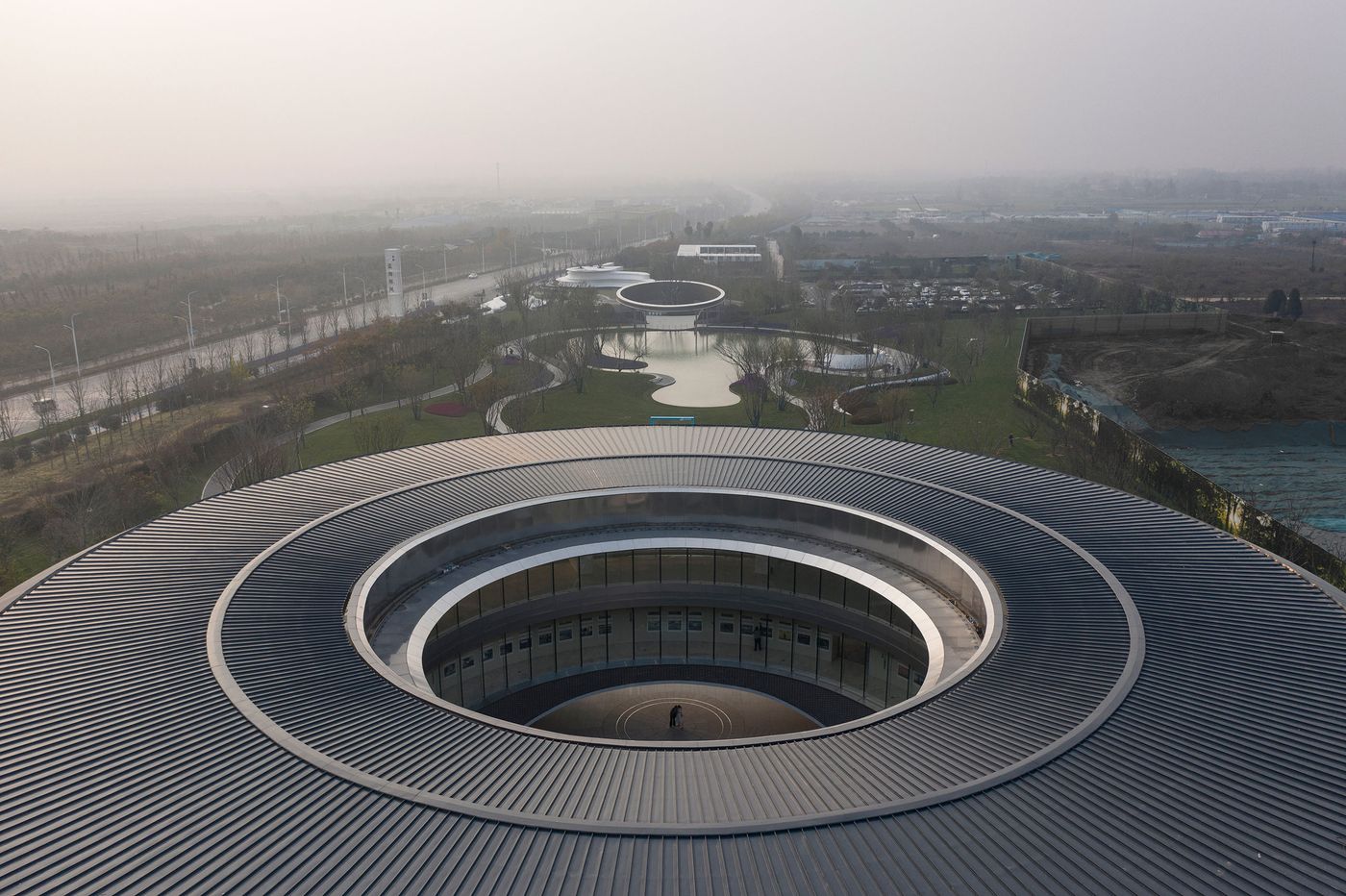
Lacime Architects Draw from Ancient Chinese Texts to Design a Modern Edifice
Words by Yatzer
Location
Zhengzhou, China
Lacime Architects Draw from Ancient Chinese Texts to Design a Modern Edifice
Words by Yatzer
Zhengzhou, China
Zhengzhou, China
Location
Located outside Zhengzhou, China, the JianYe - LanHai ZhengFeng Hotel definitely stands out as the only new building in an otherwise as-yet-to-be-developed area designated as Henan province’s future land-to-air transport hub. Nevertheless, monumental in its own right and in complete dialogue with the landscaped garden stretching before it, Shanghai-based practice Lacime Architects who are responsible for its design, have created a building that is a jewel of geometric gracefulness possessing a sculptural simplicity, whose contemporary architecture is informed by ancient Chinese principles.
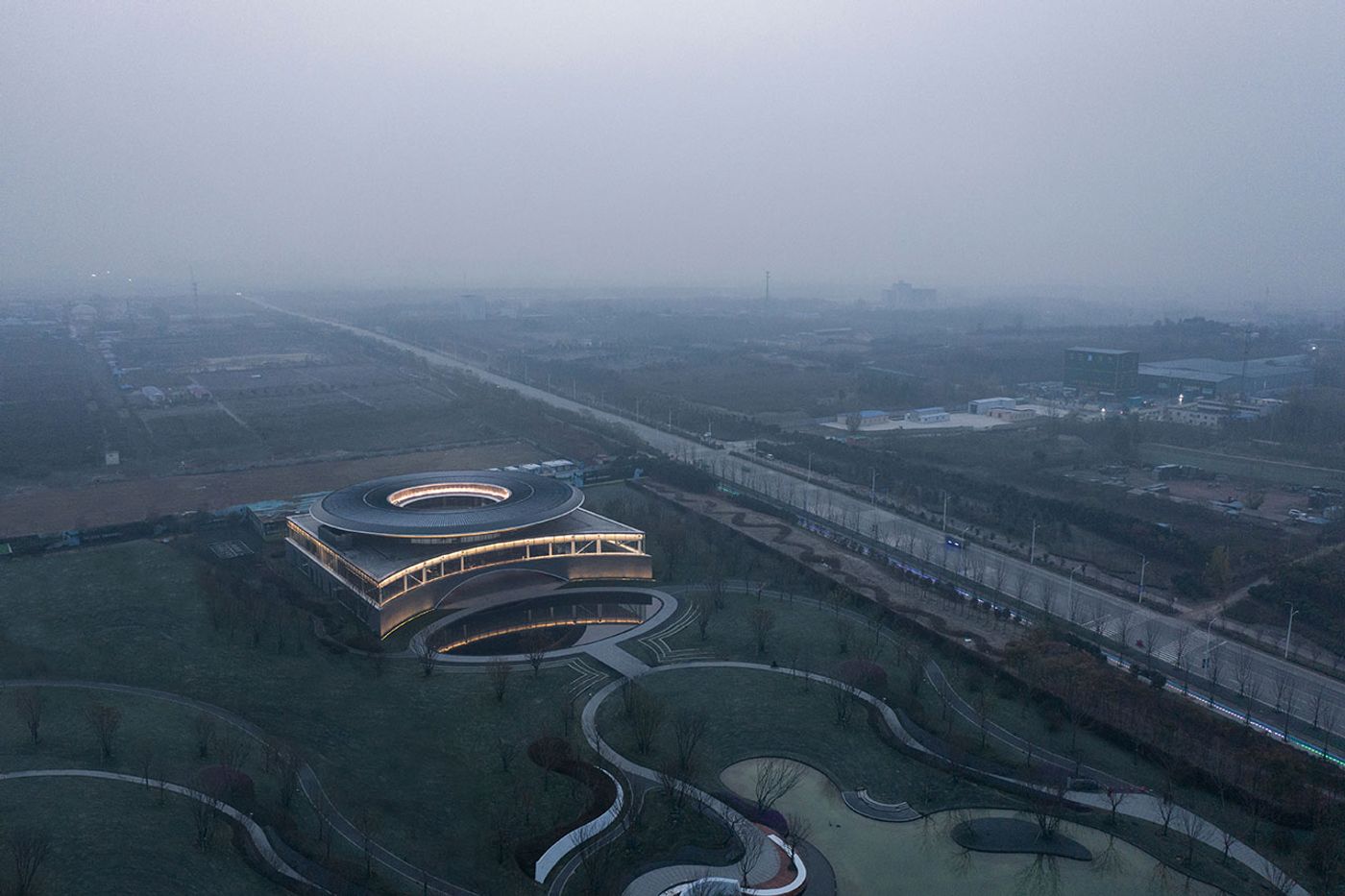
Photography © CAAI
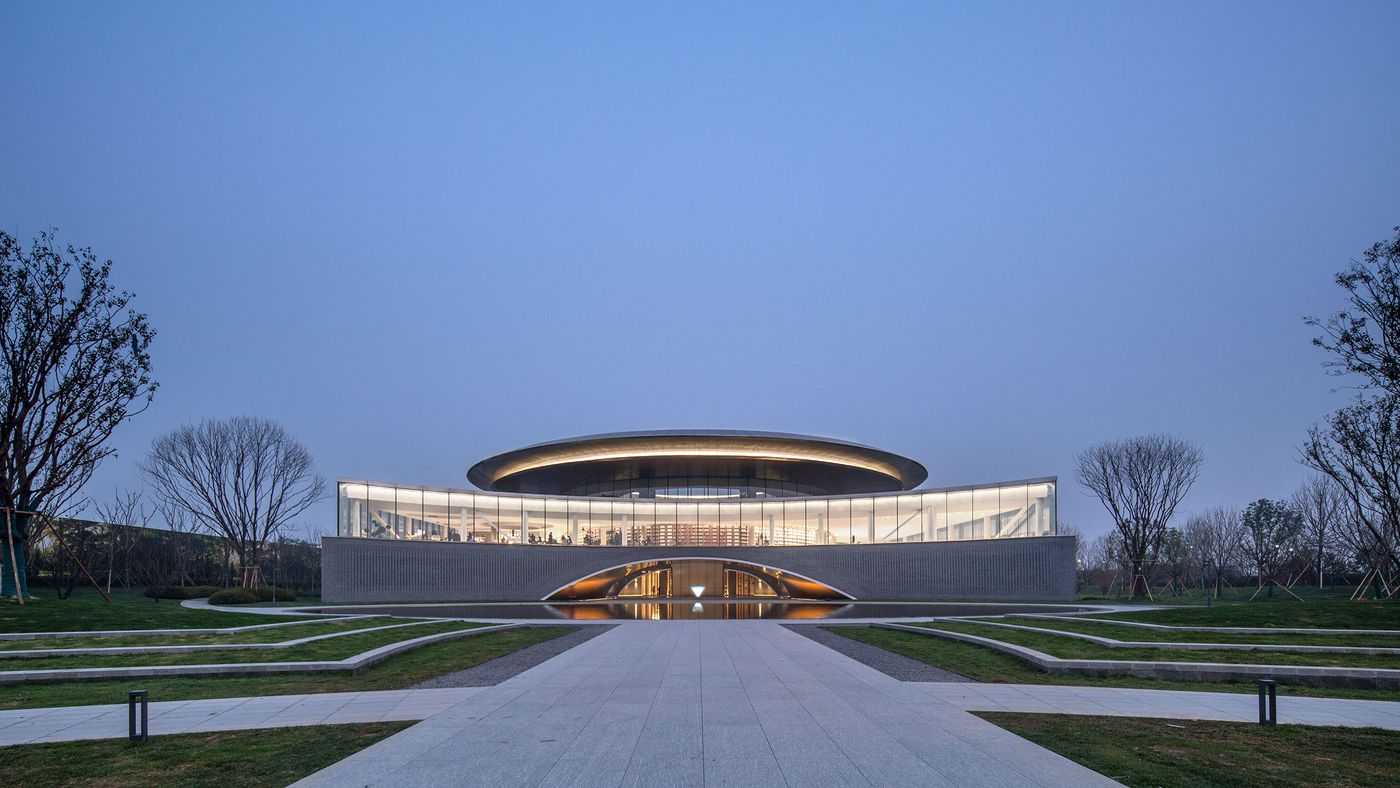
Photography © CAAI
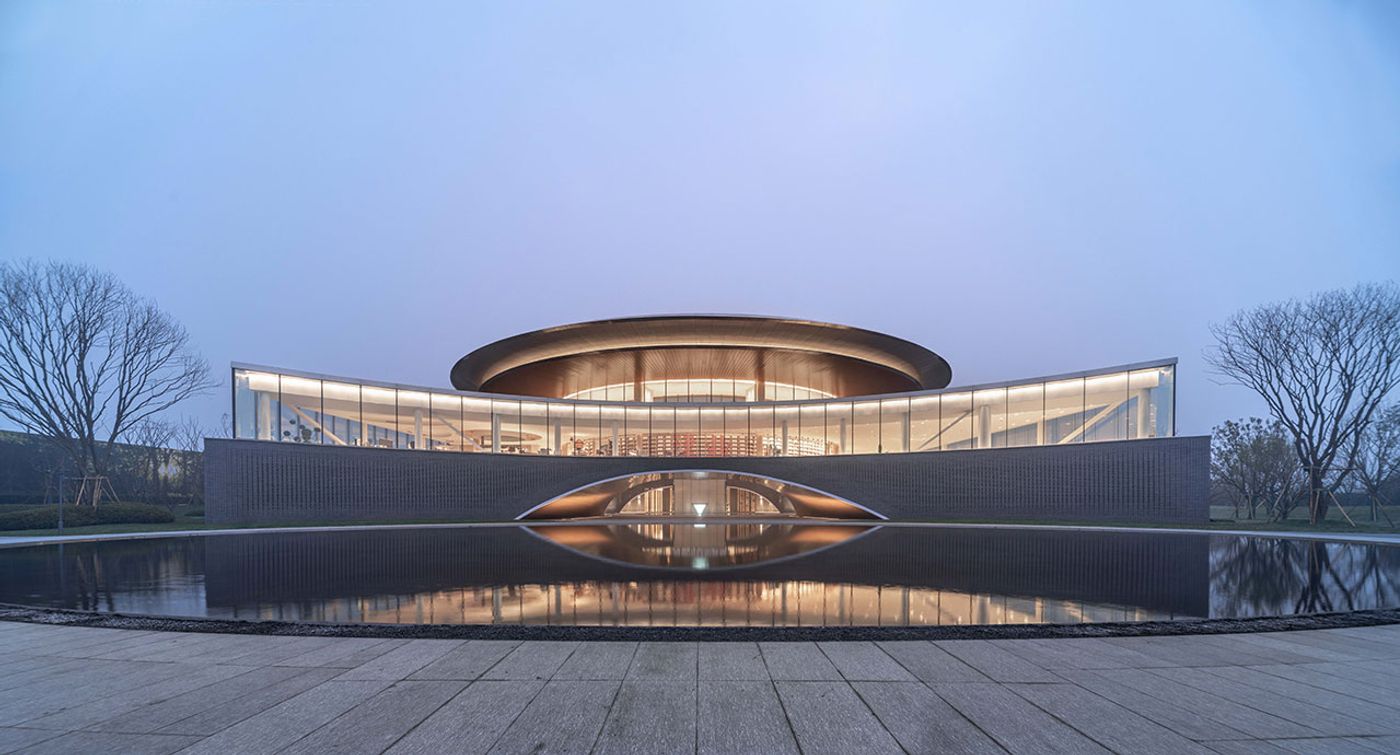
Photography © CAAI
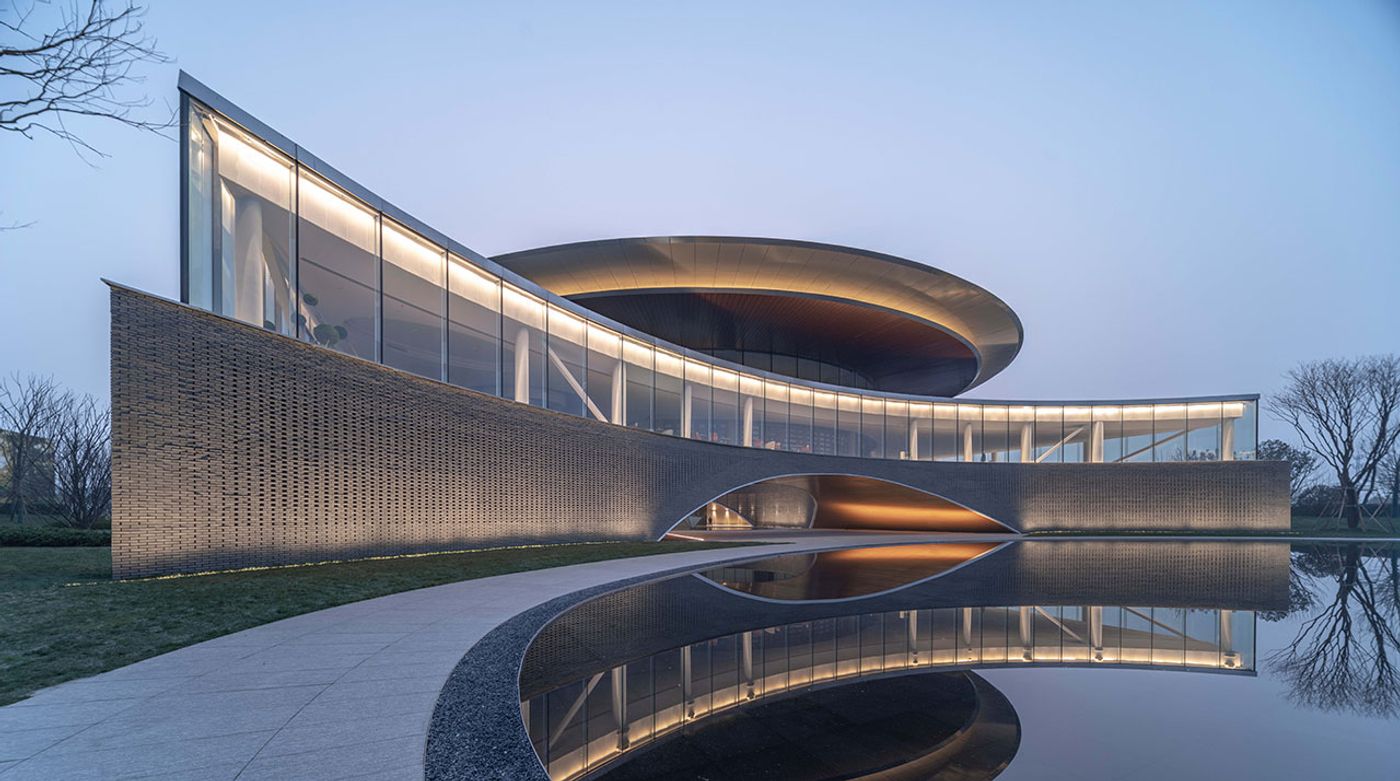
Photography © CAAI
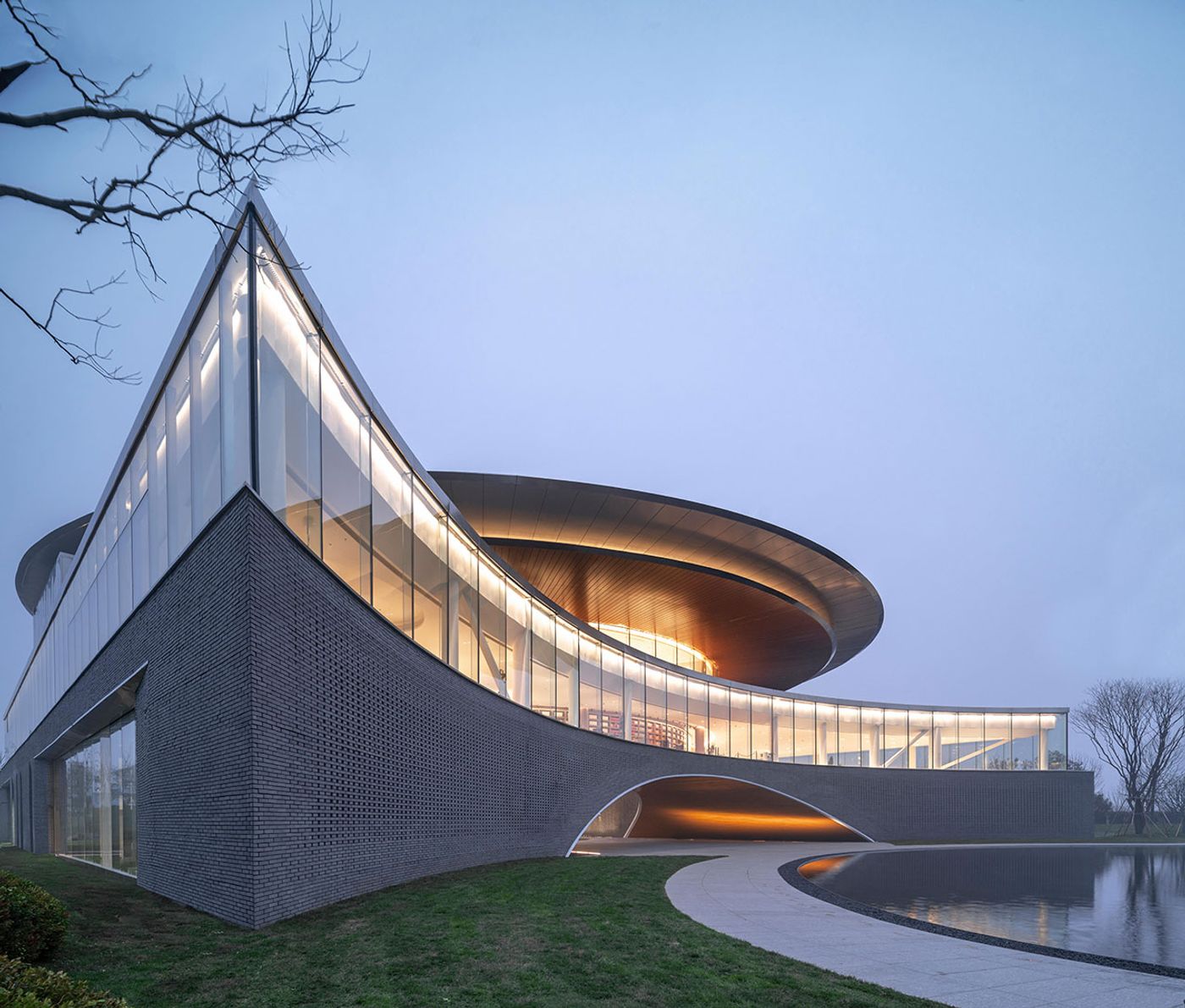
Photography © CAAI
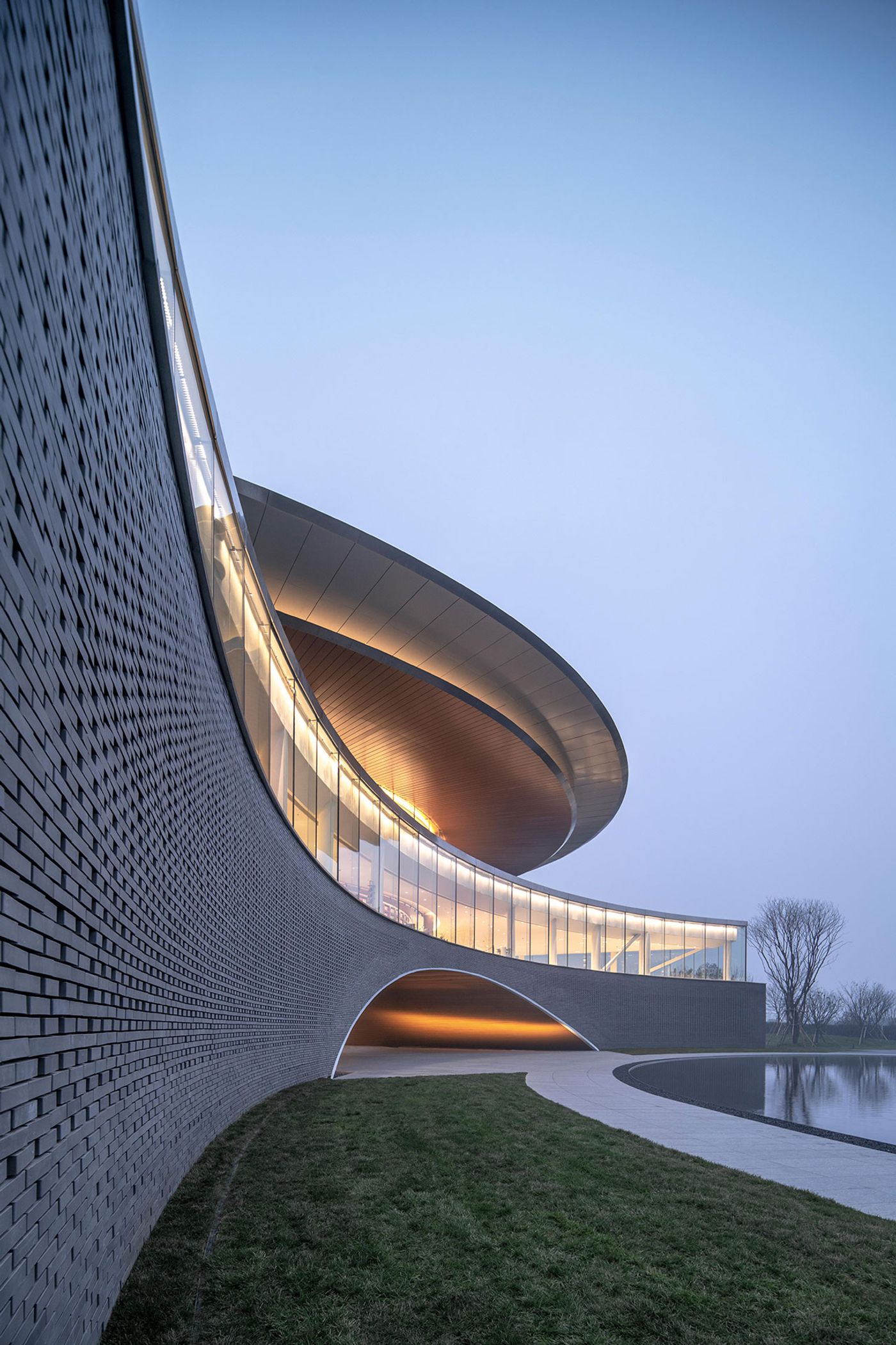
Photography © CAAI
The building takes the form of low-slung rectangular volume that is topped by a glass cylindrical volume and crowned by a disc-shaped, flat roof. In the front, the façade gently curves inwards to embrace a large elliptical pond, part of the property’s beautifully landscaped gardens that are based on the country’s ancient garden design. A wide, arched opening that echoes the curvature of the façade leads onto an internal, round-shaped courtyard at the heart of the building, a nod to traditional Chinese architecture; the architects in fact drew inspiration from the Kao Gong Ji, an ancient Chinese encyclopaedia of technology which forms part of the Rites of Zhou, an ancient ritual text written in about 300 BC described as a utopian “constitution” on bureaucracy and organizational theory.
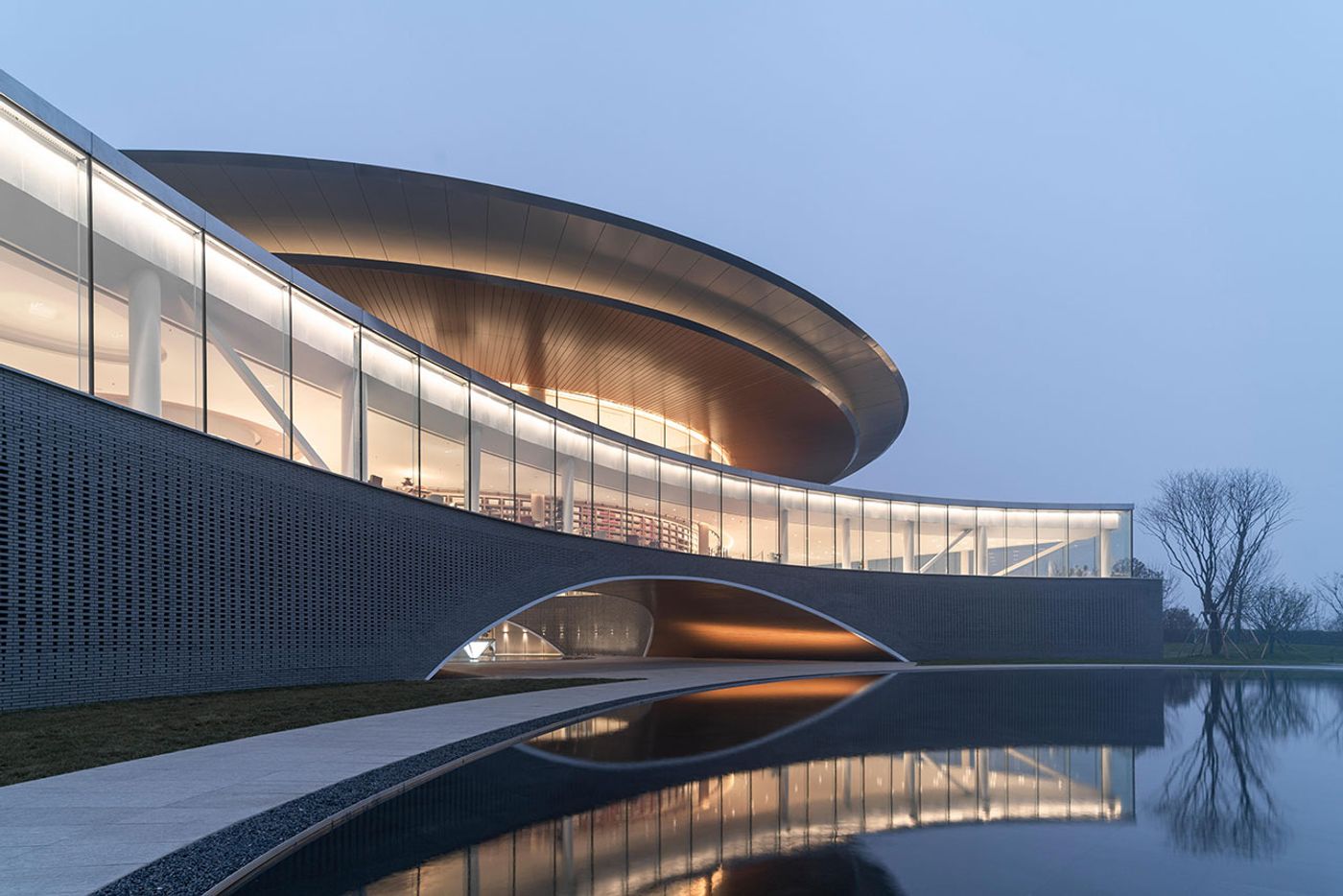
Photography © CAAI
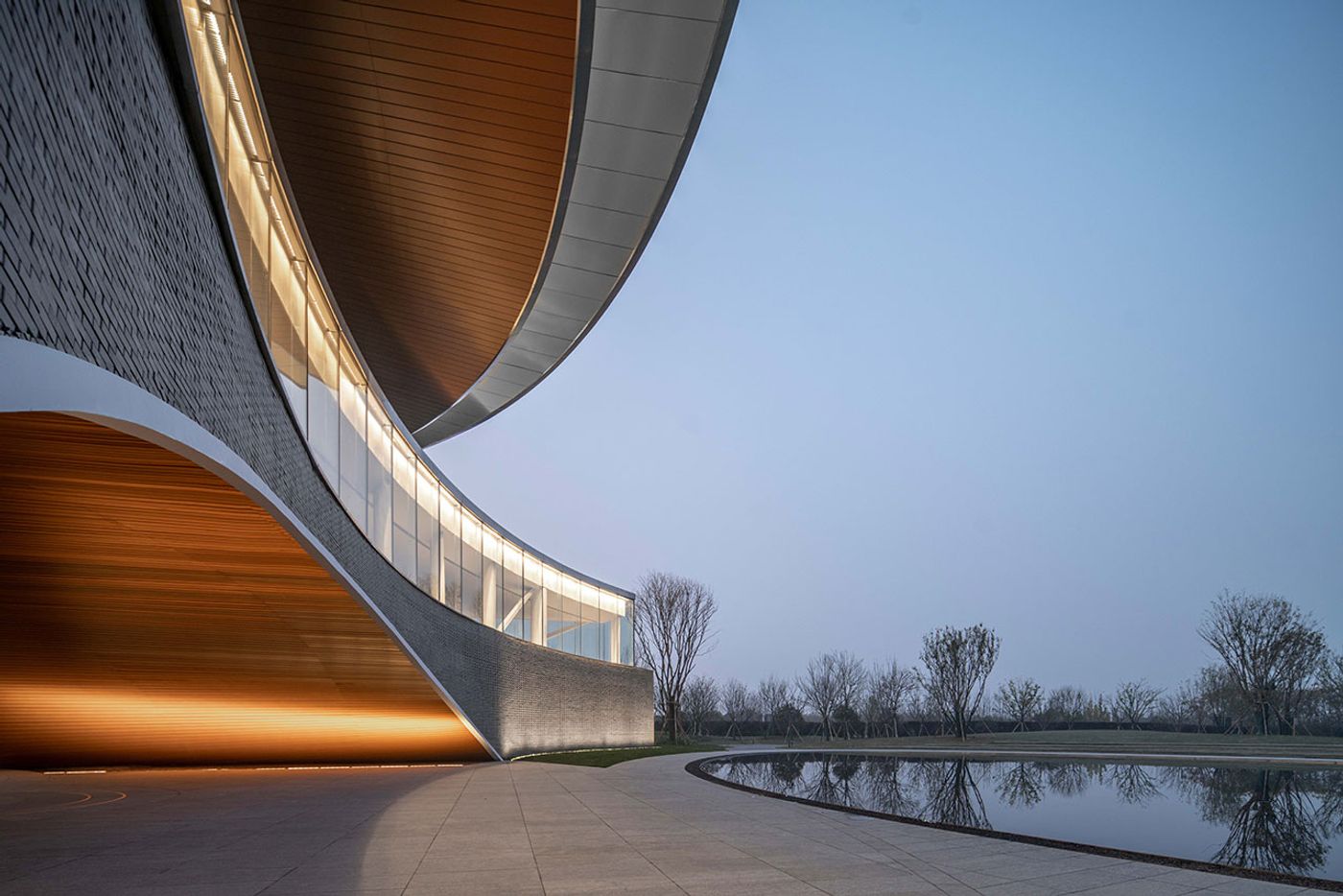
Photography © CAAI
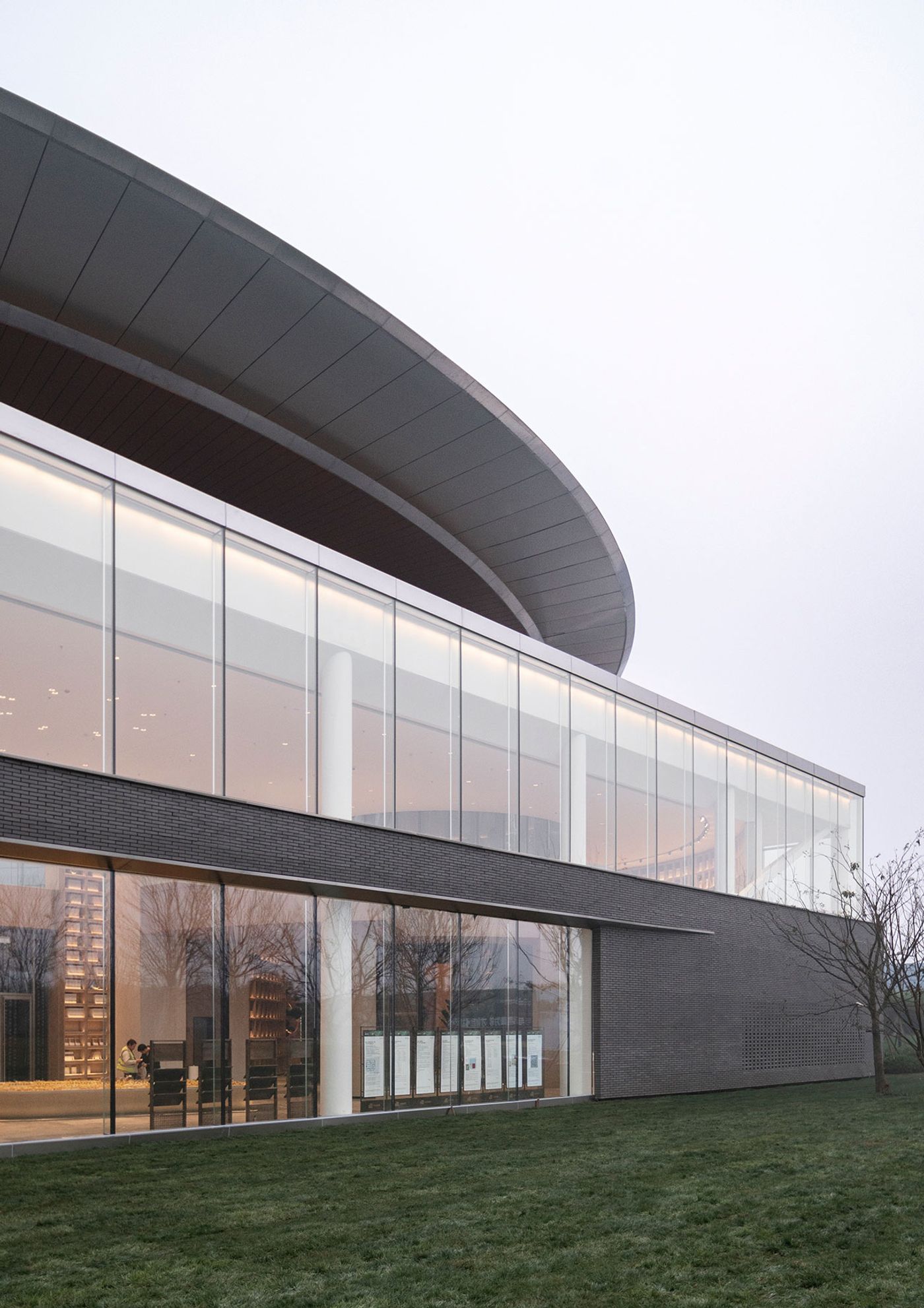
Photography © CAAI
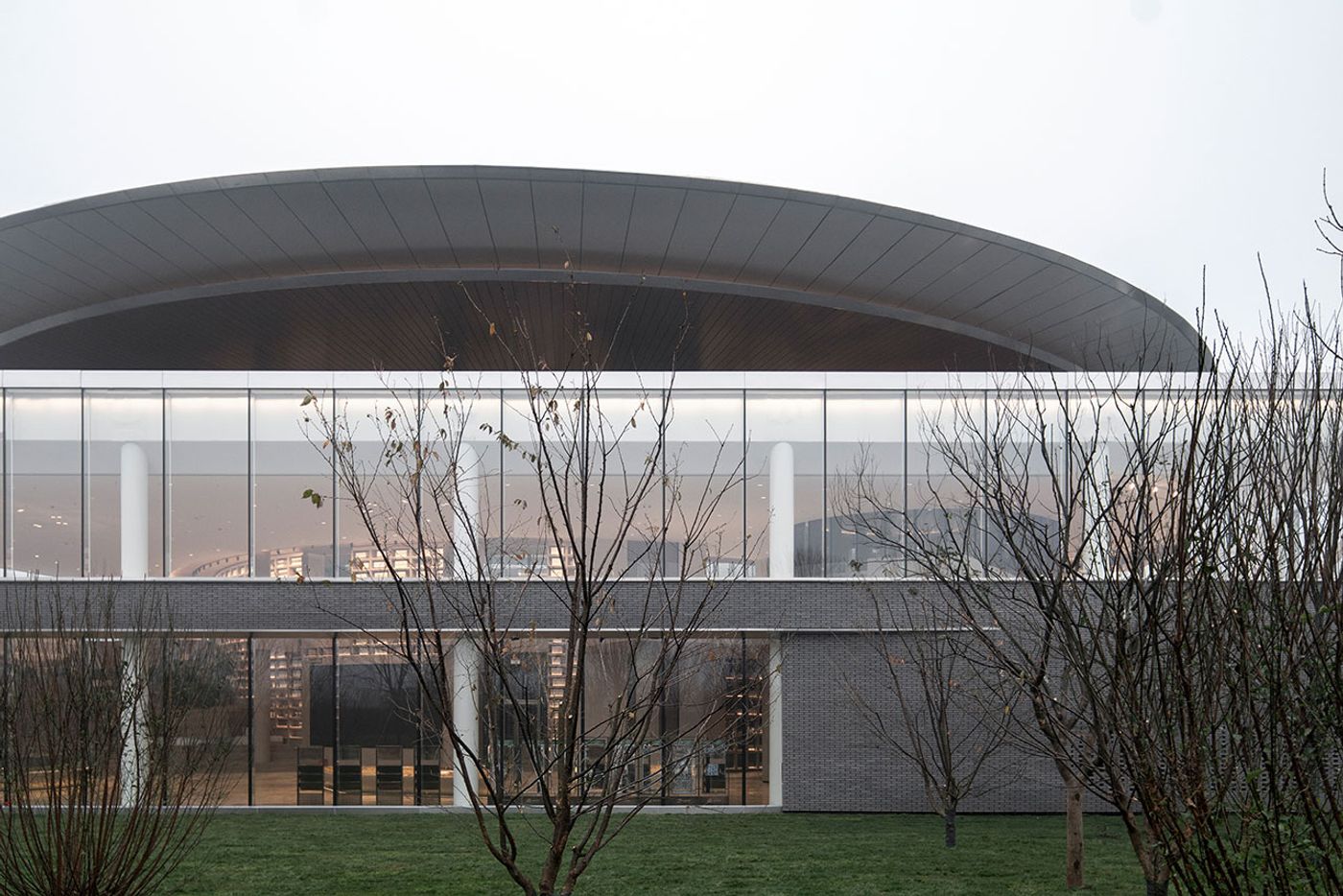
Photography © CAAI
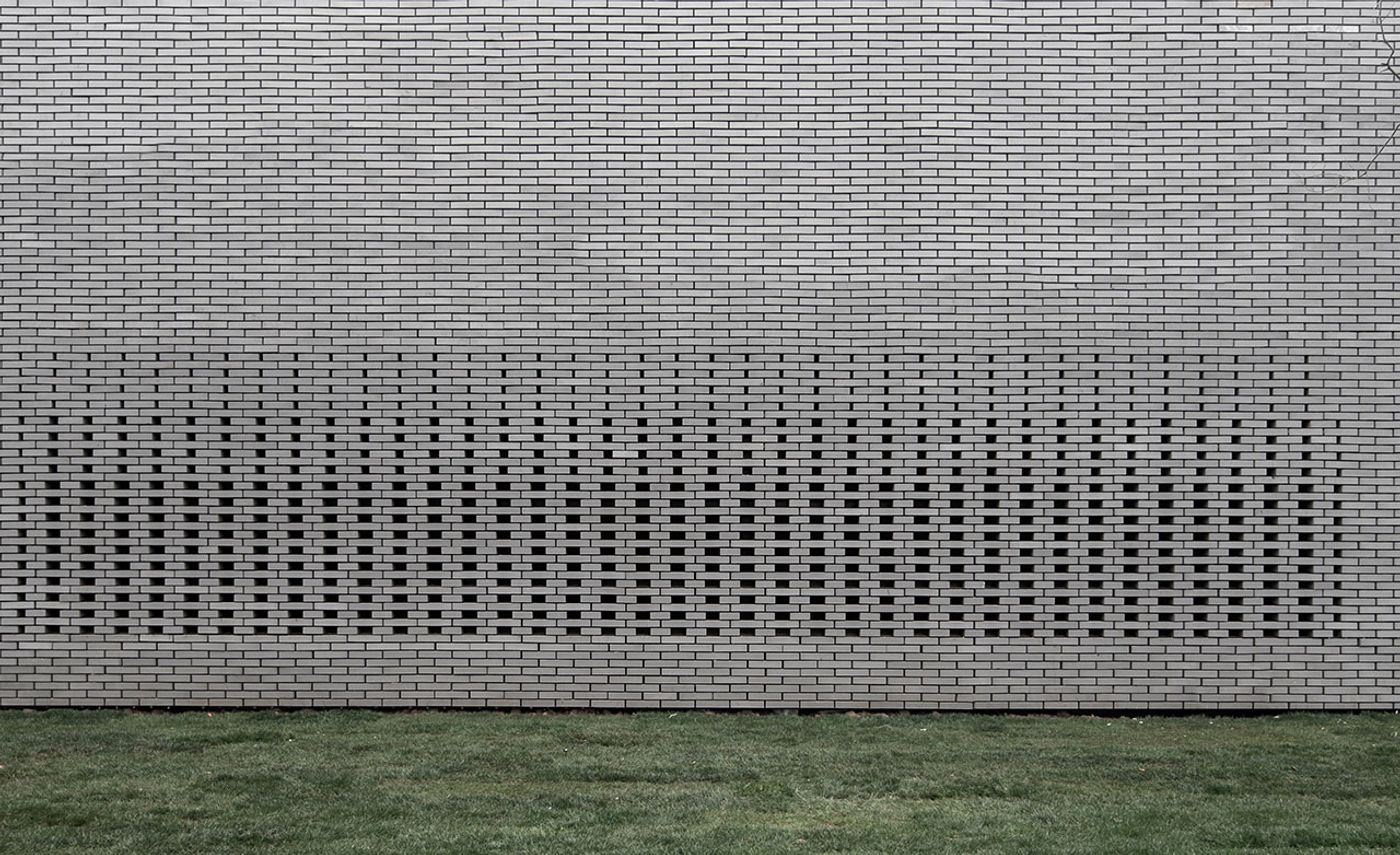
Photography © CAAI

Photography © CAAI
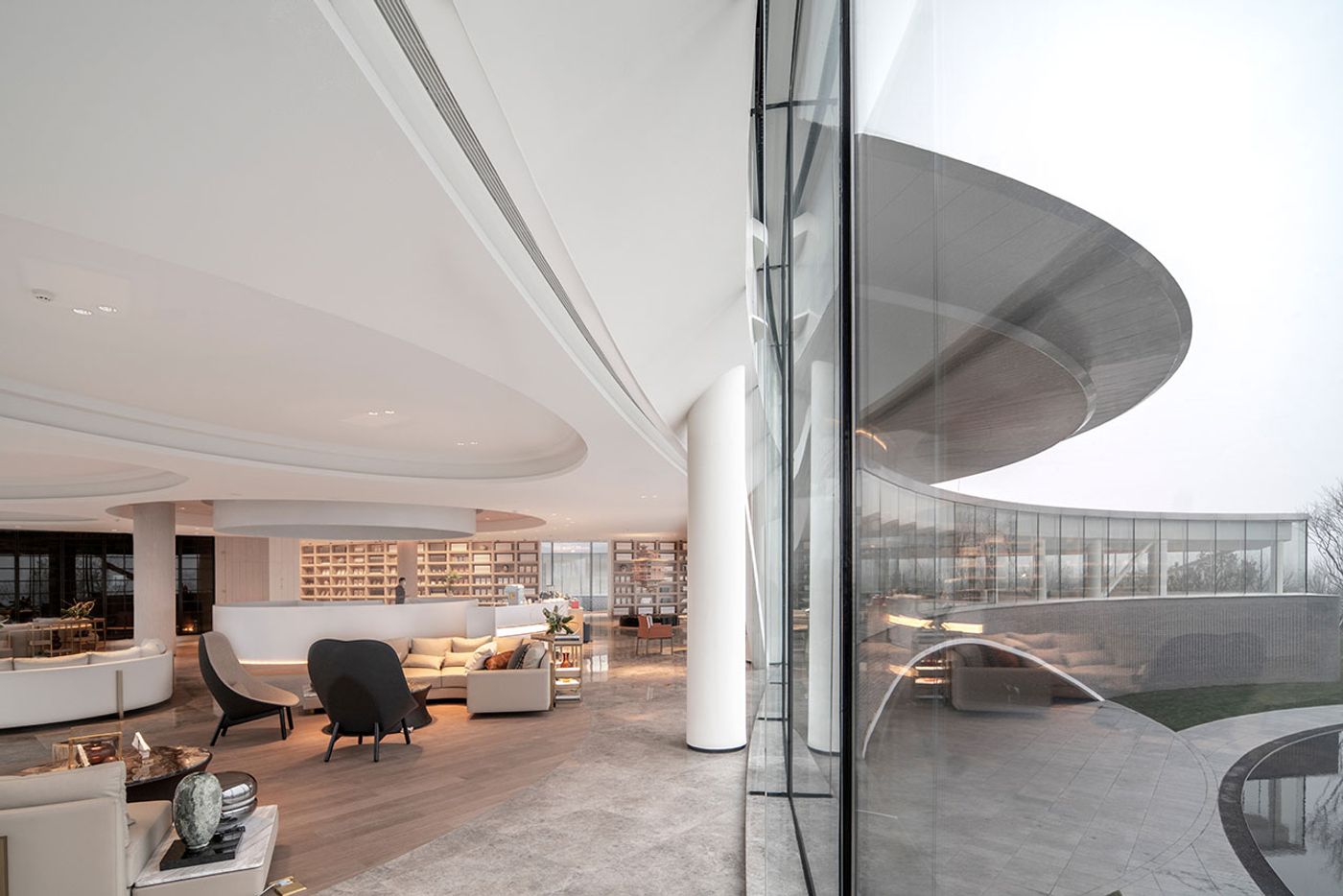
Photography © CAAI

Photography © CAAI
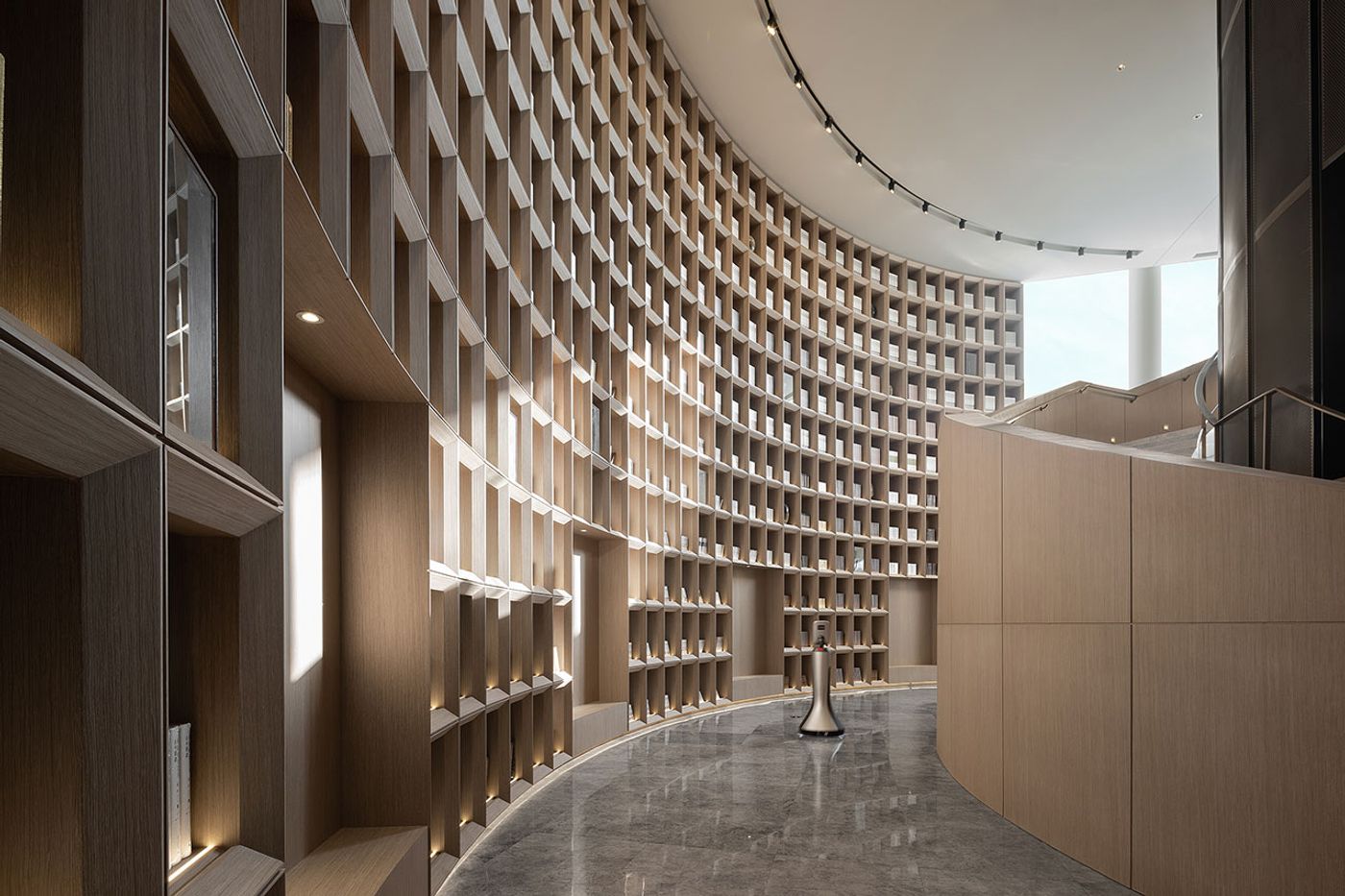
Photography © CAAI
The simple yet monumental mass of the building and its intimate relation to its surroundings emphasise its civic quality as well as imbues the project with a spiritual sensibility. The latter is amplified by the imposing design of the arched entrance that ceremonially draws visitors into the central courtyard, which in turn is conceived as a place of reflection, complete with a round reflective pool and a symbolic sculpture in its centre. Conceived by Lacime Architects as a “time container”, the sculpture is shaped as an upside-down pyramid which once reflected in the pond takes the form of an hourglass signifying a poetic indication of the passage of time.
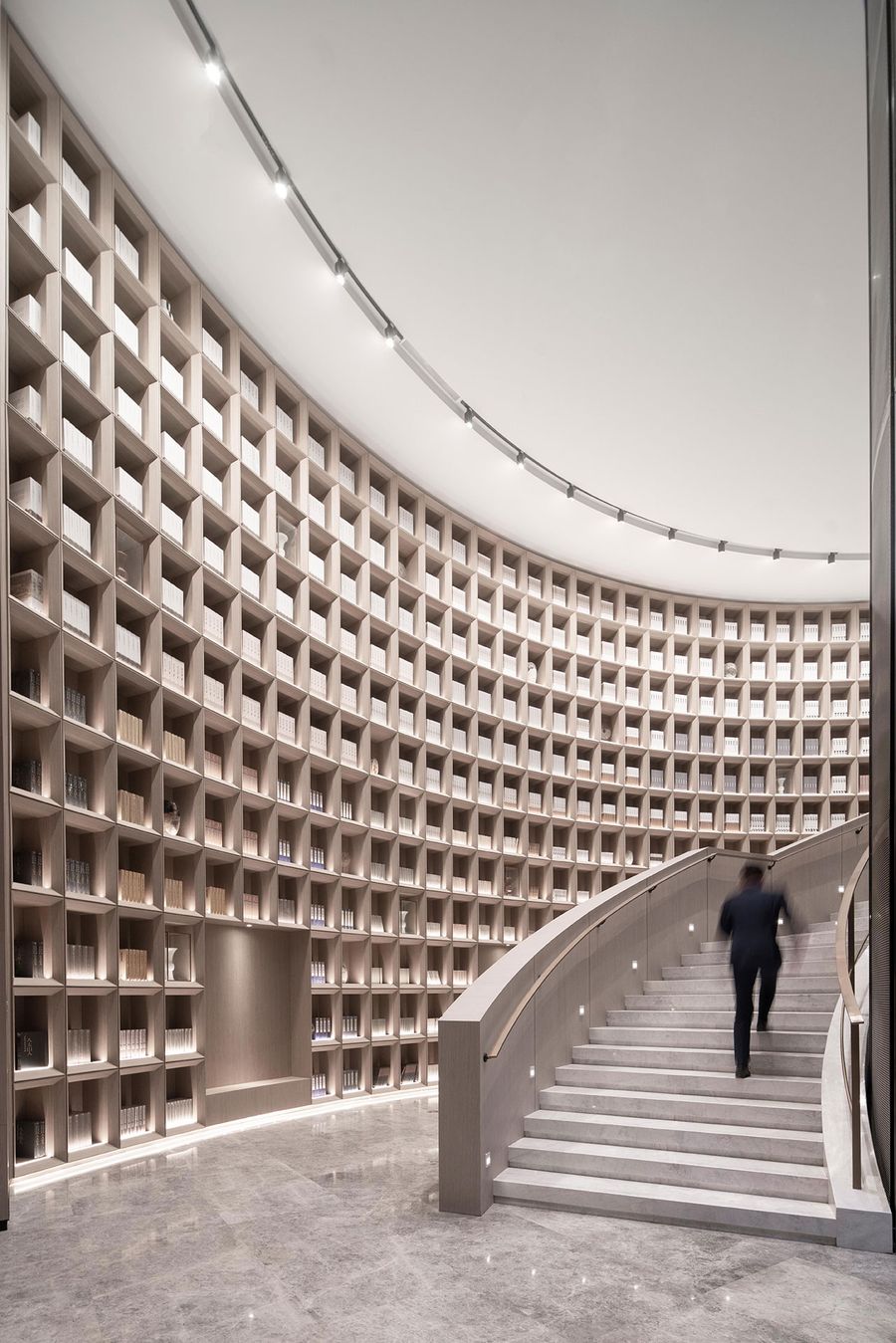
Photography © CAAI
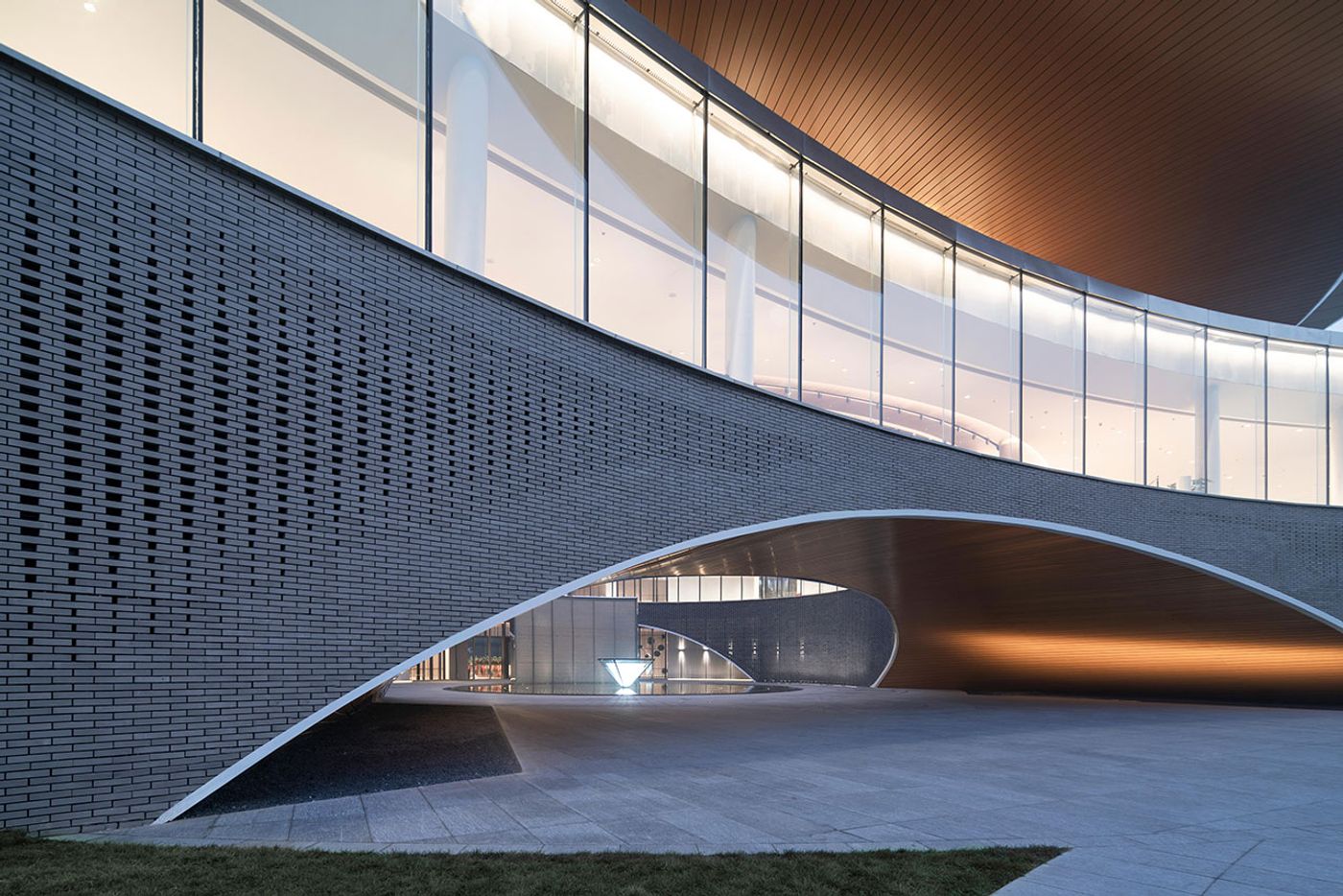
Photography © CAAI
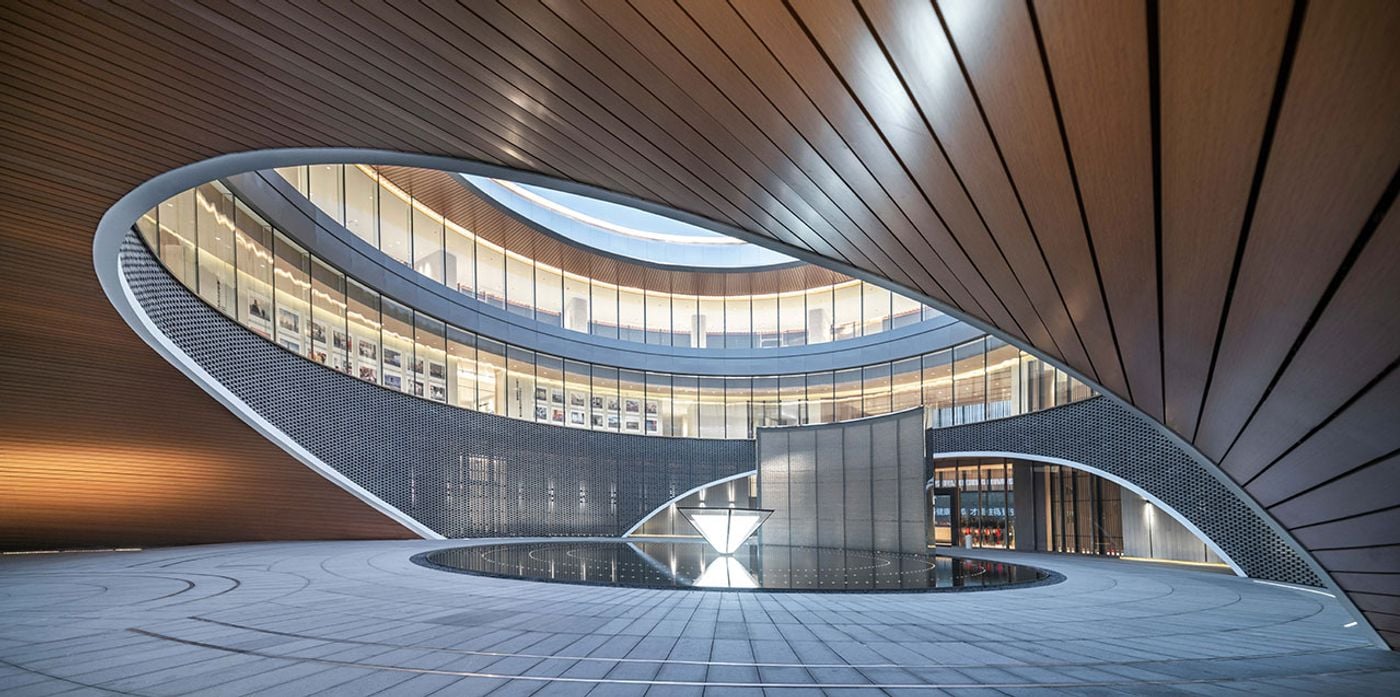
Photography © CAAI
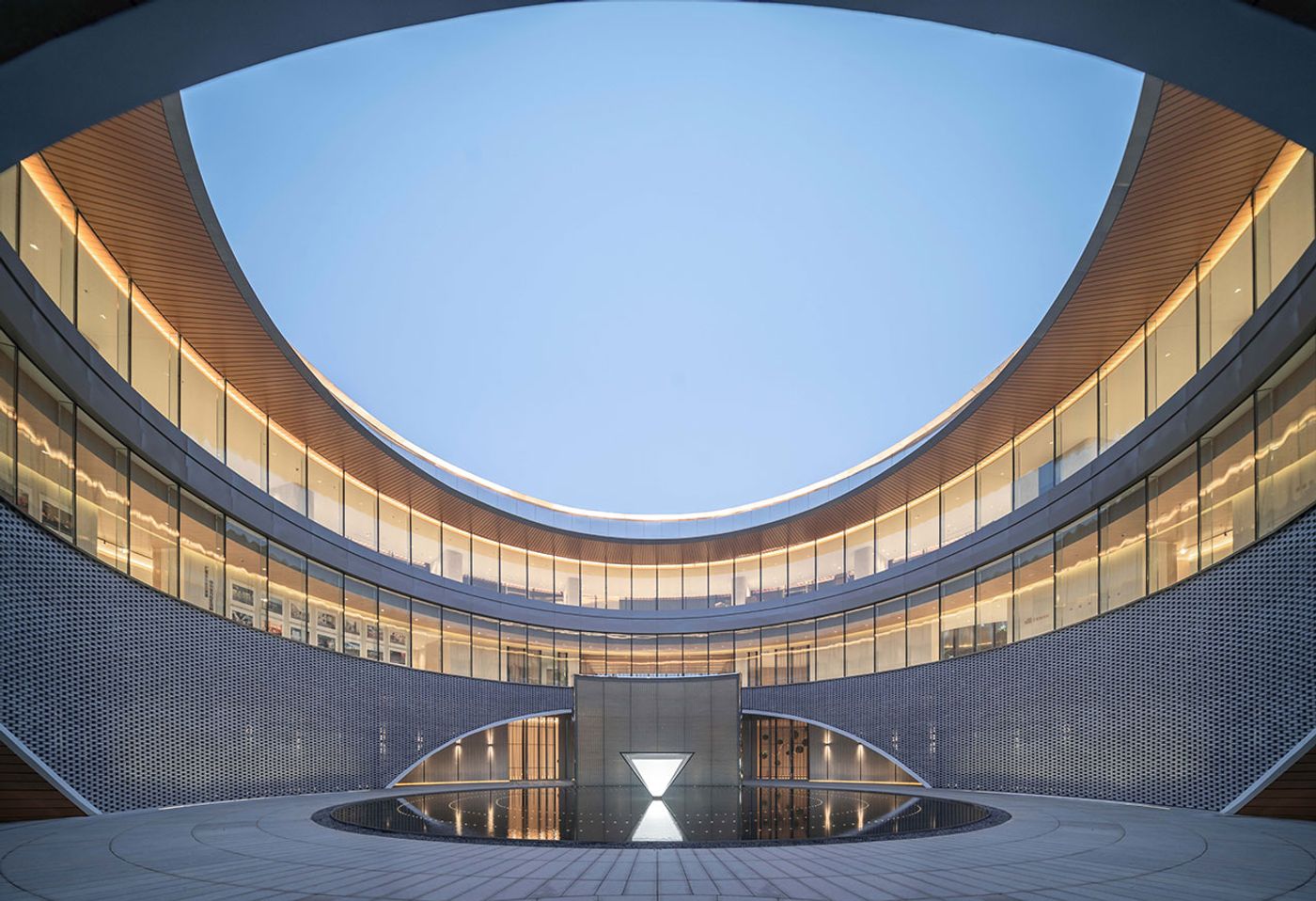
Photography © CAAI
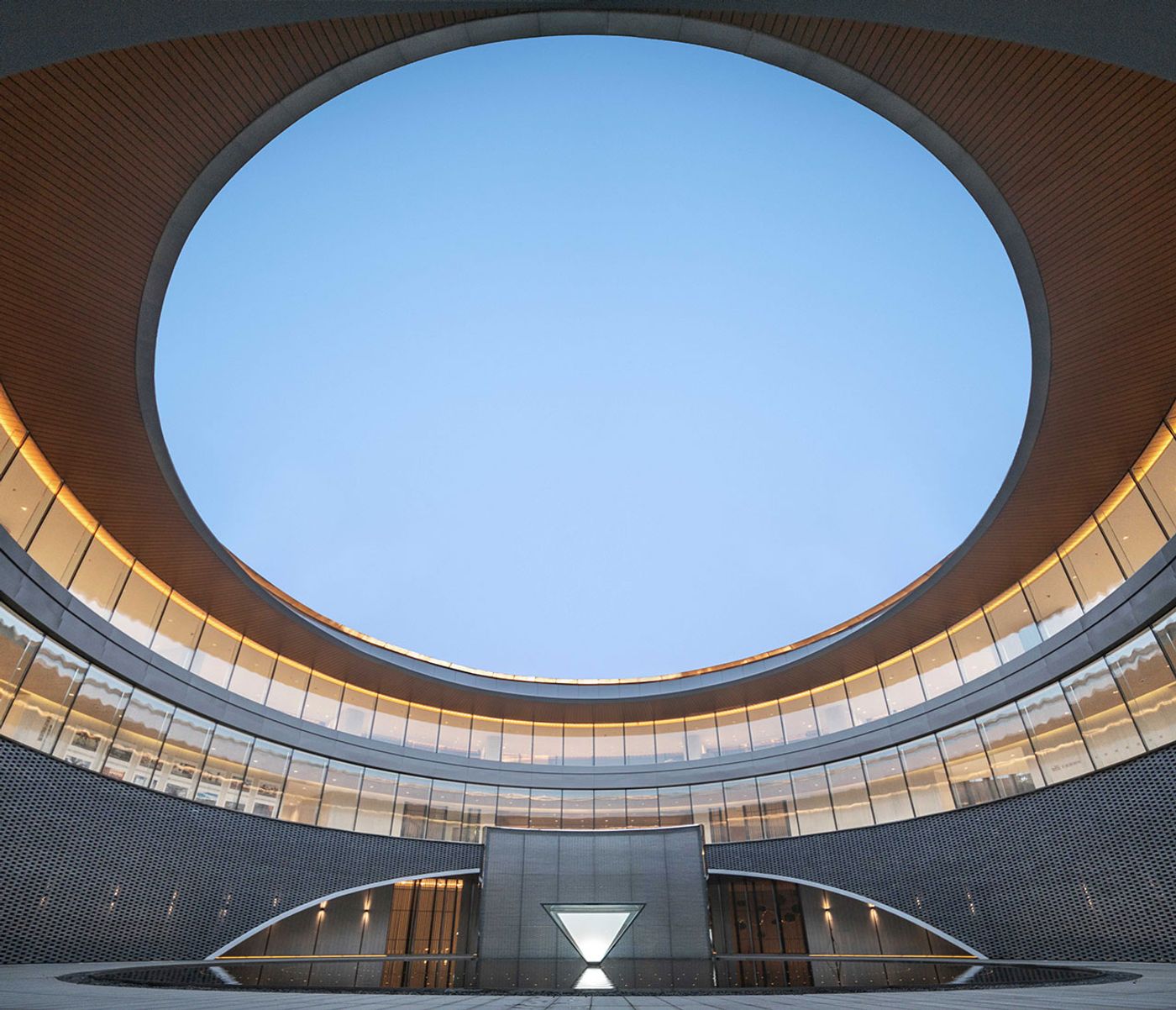
Photography © CAAI
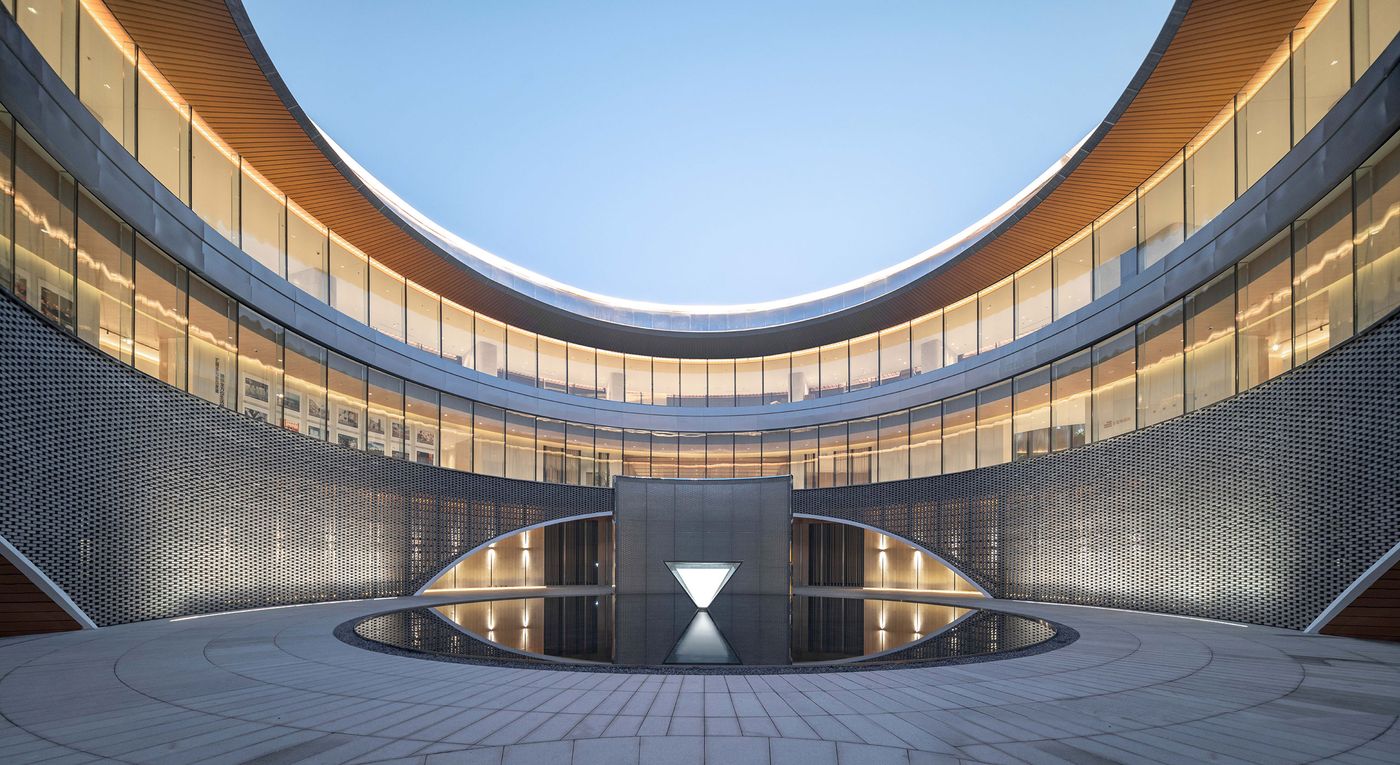
Photography © CAAI

Photography © CAAI
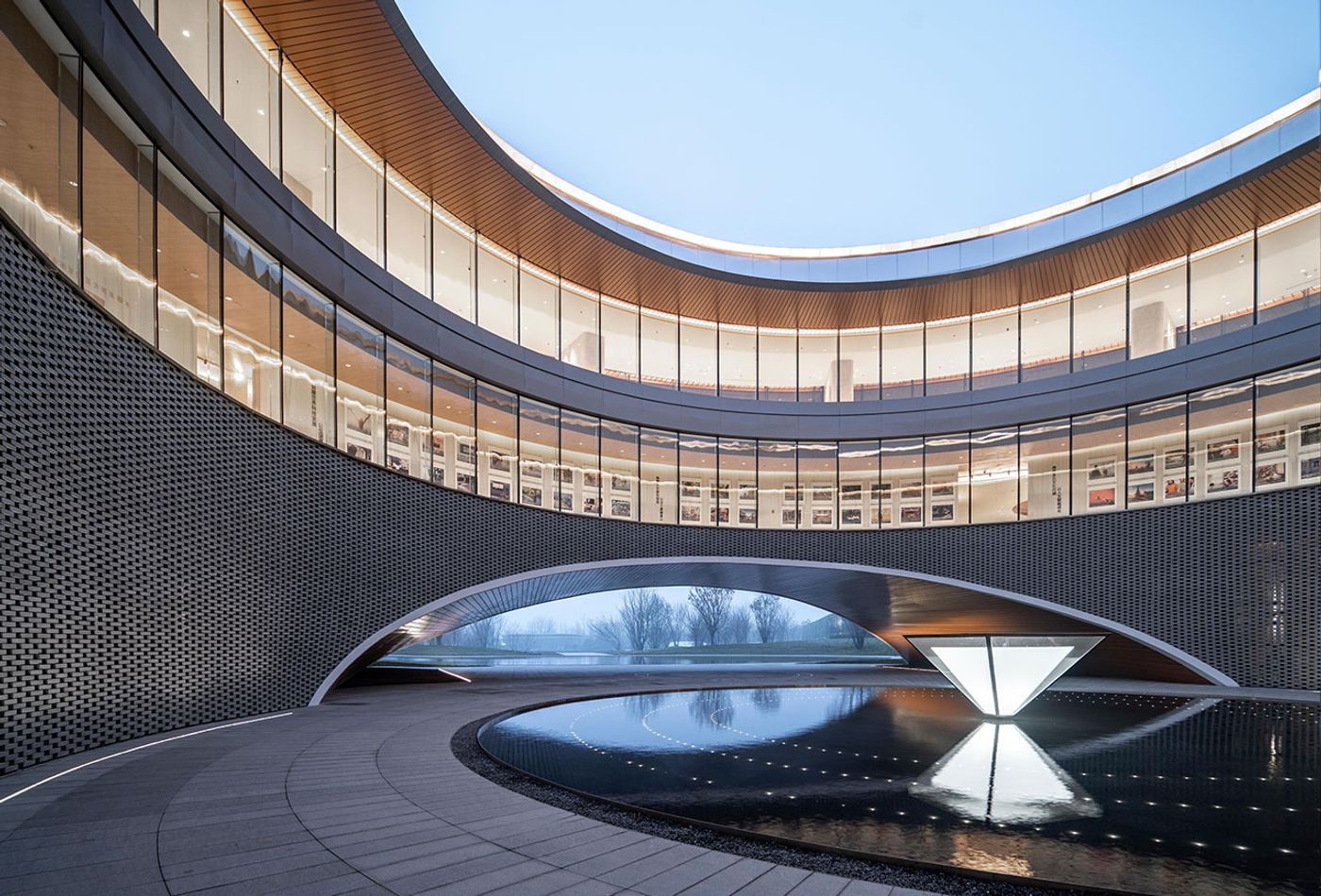
Photography © CAAI

Photography © CAAI
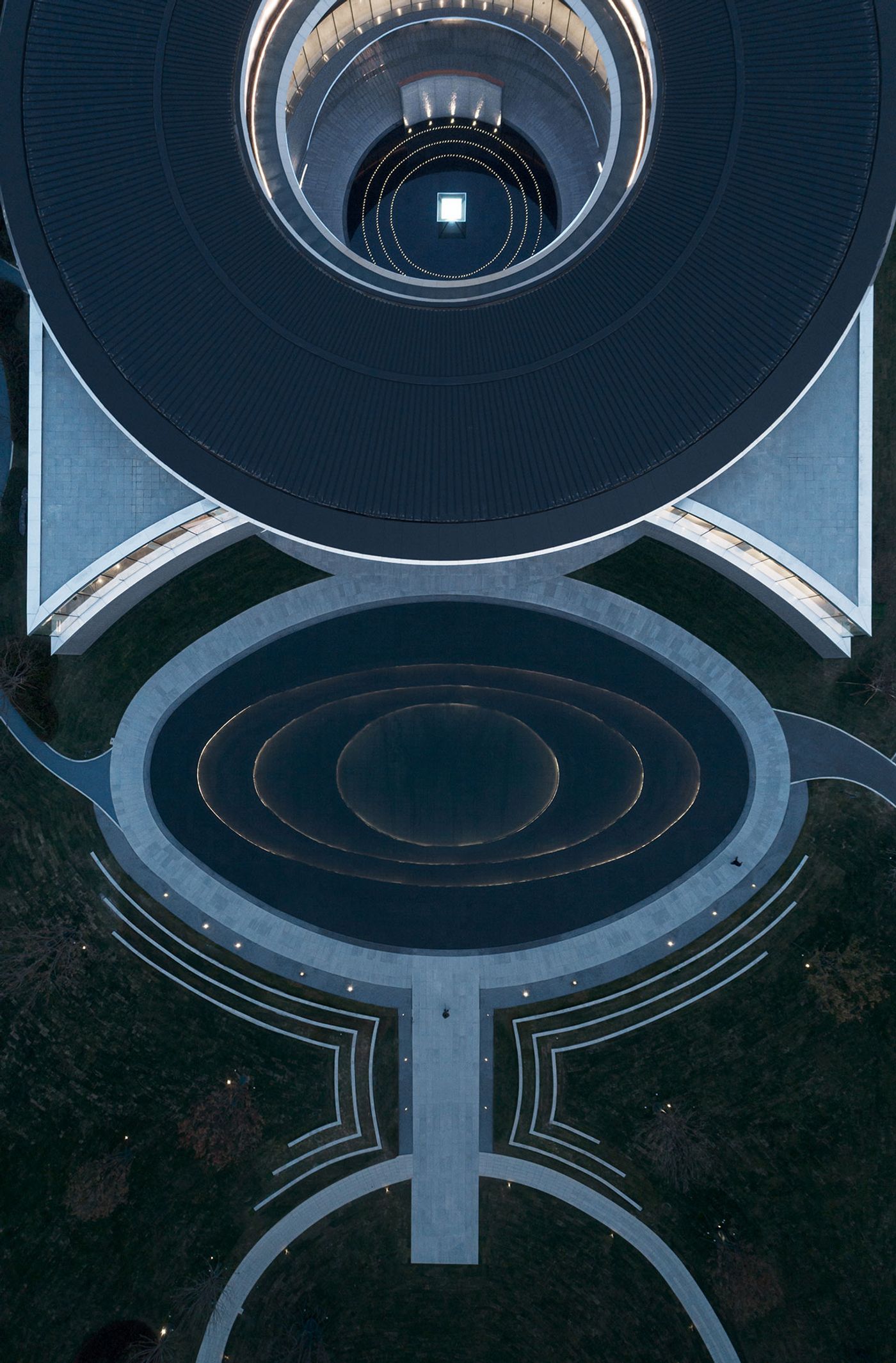
Photography © Mingjing
The architects have also paid special attention to the finish of the materials in relation to their glossiness and reflectiveness. By artfully combining materials such as earthenware tiles, matte aluminum-and-plastic composite sheets, and brushed stainless steel, they have wrapped the building in matt-to-glossy gradients whose subtle beauty is enhanced by the their reflections in the garden and courtyard ponds.
Such a combination of materials also reflects the architects’ intention of marrying contemporary architecture with traditional Chinese culture. Most impressively, the lower parts of the building, including the central courtyard, are clad in 100,000 ceramic tiles, their staggered configuration and varying density imparting texture and patterns to the curved facades in juxtaposition to the glossy sleekness and uniformity of the glazed upper sections. In conjunction with the innovative structural systems, including the light-weight roof truss structure that ensured a large overhang, the building both heralds the area’s future development into a regional transport hub and embodies Zhengzhou’s rich cultural heritage.
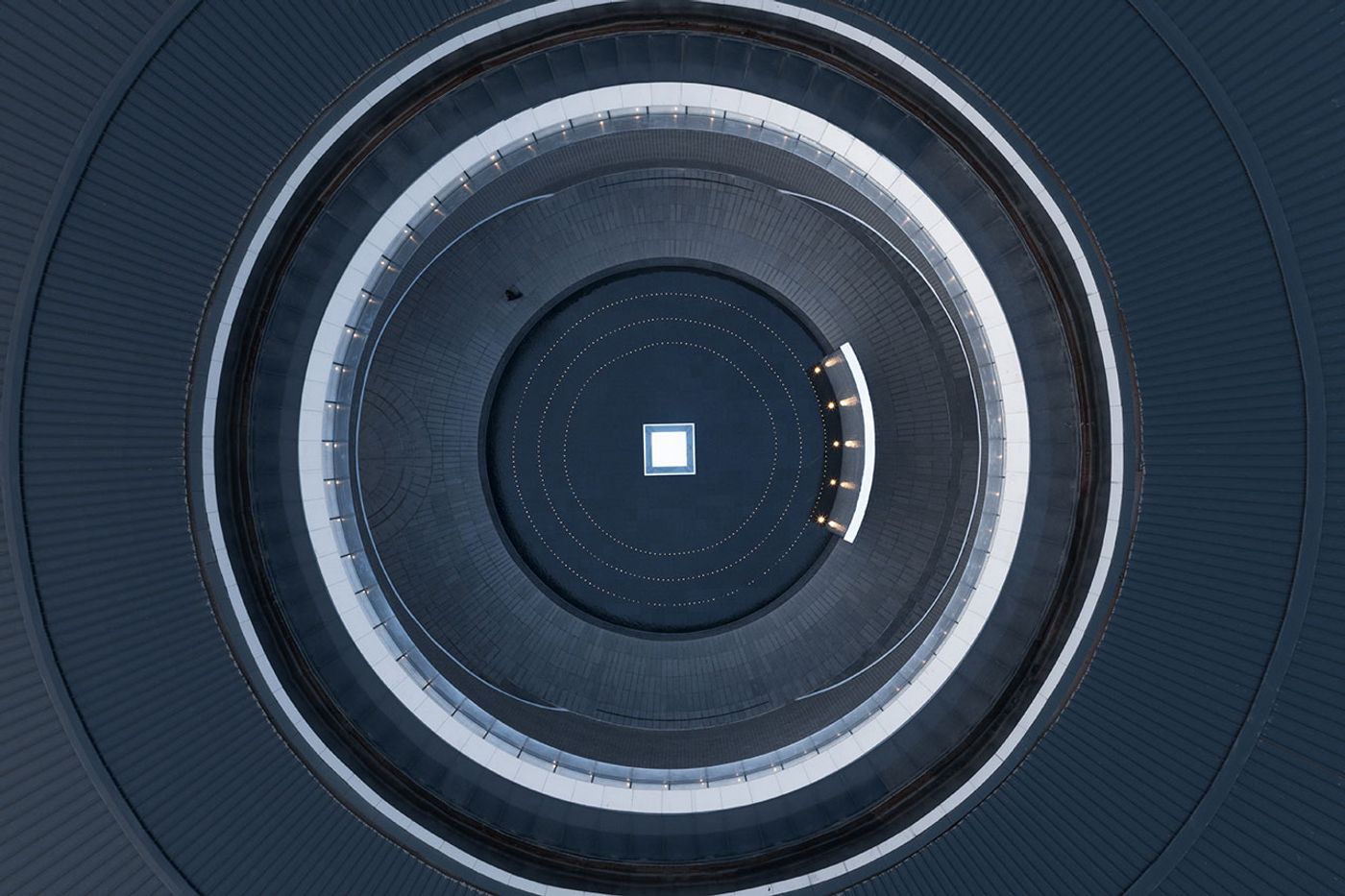
Photography © Mingjing
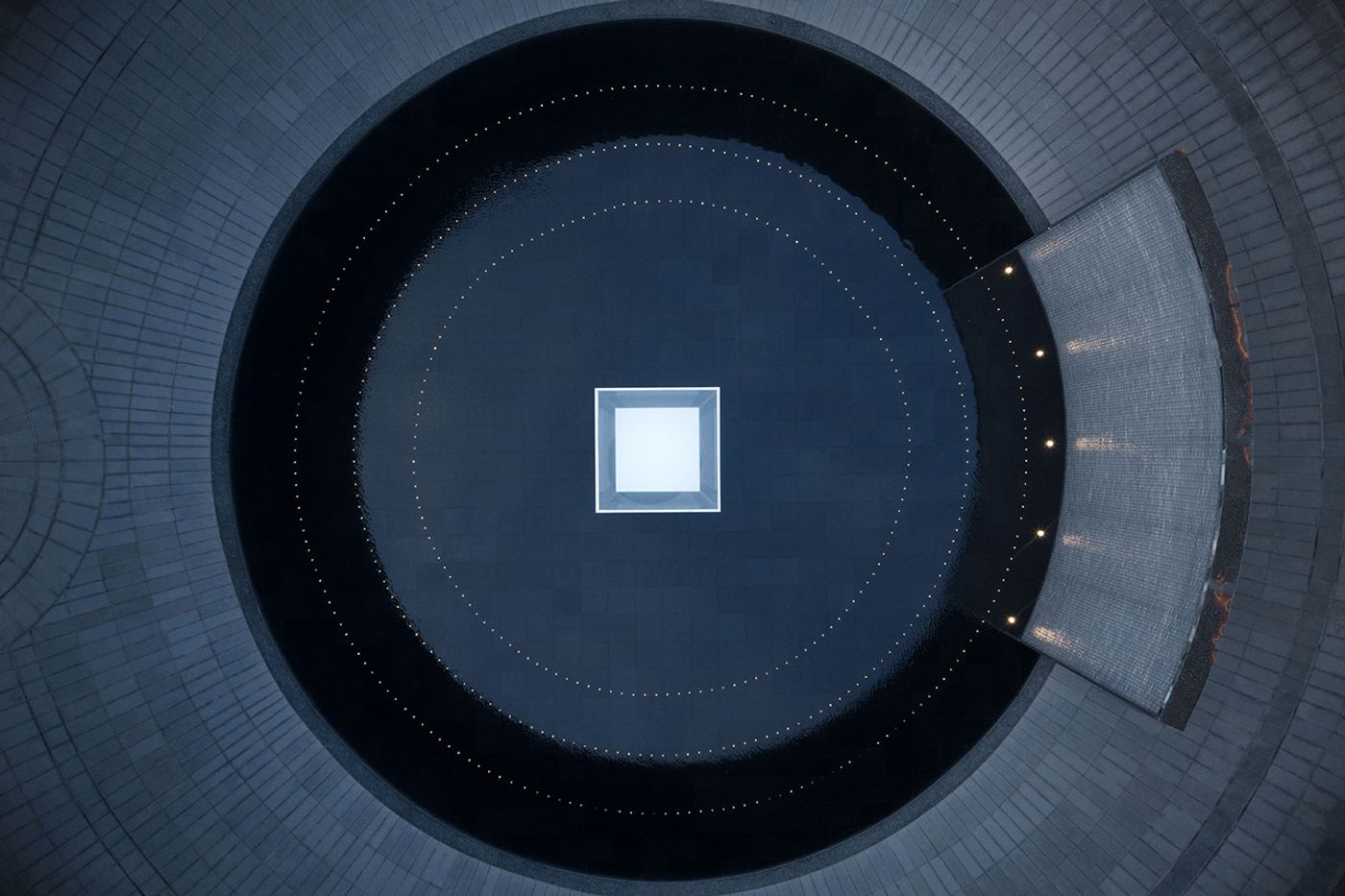
Photography © Mingjing
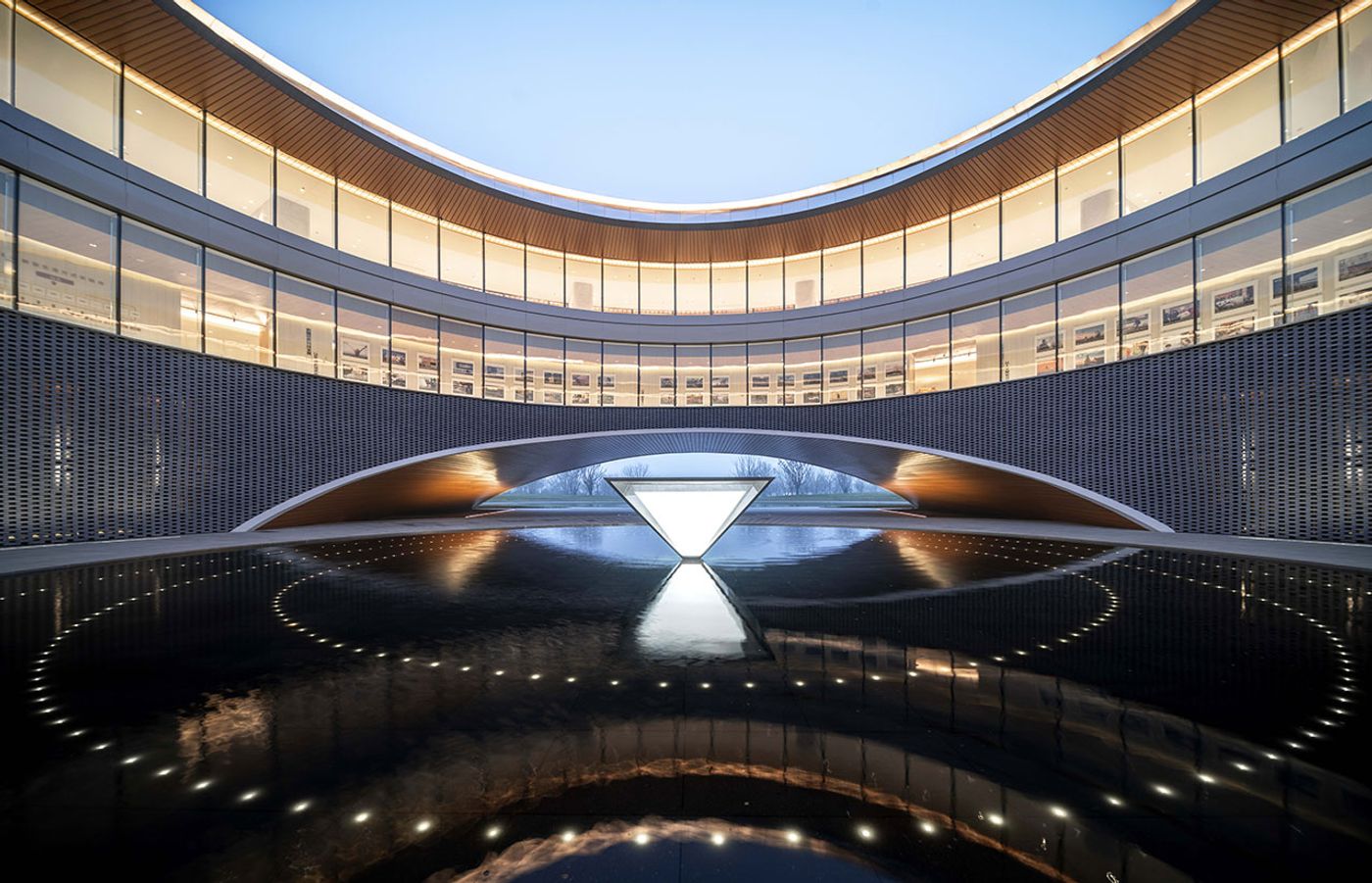
Photography © CAAI
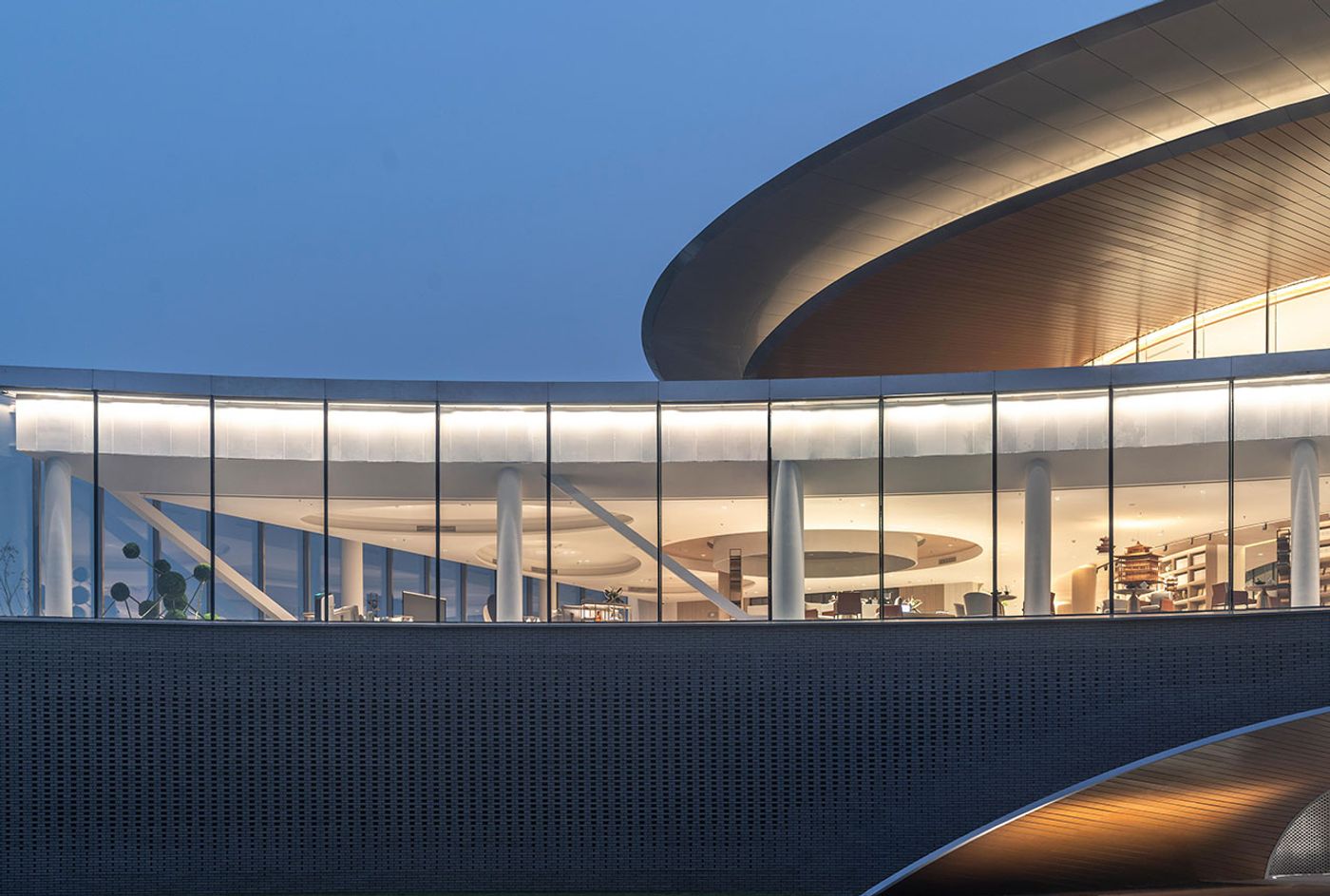
Photography © CAAI
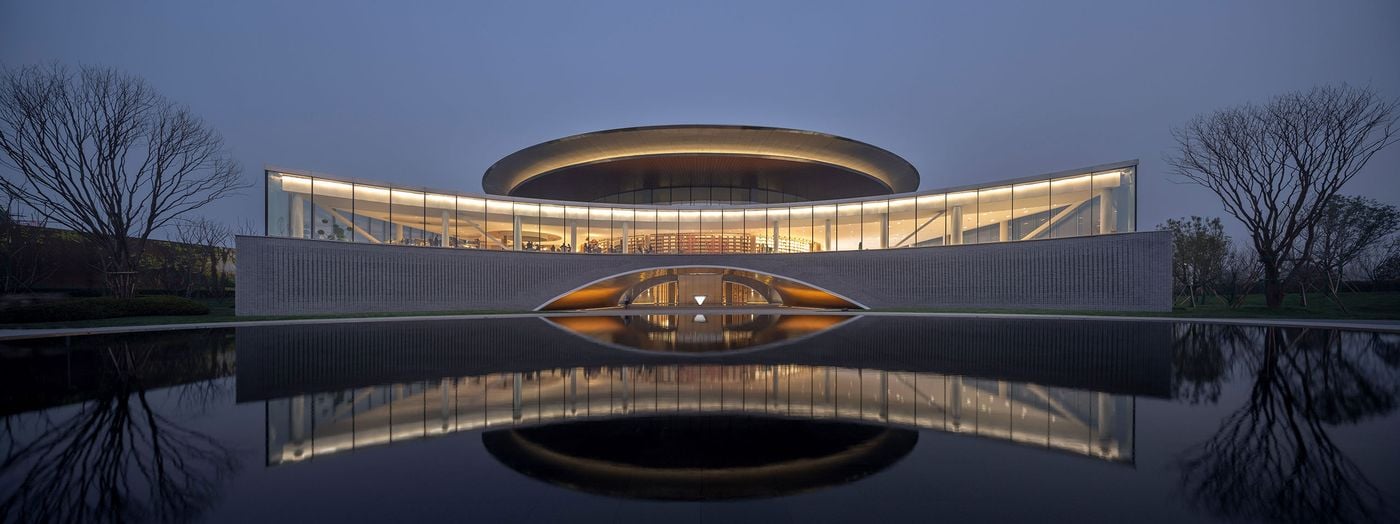
Photography © CAAI
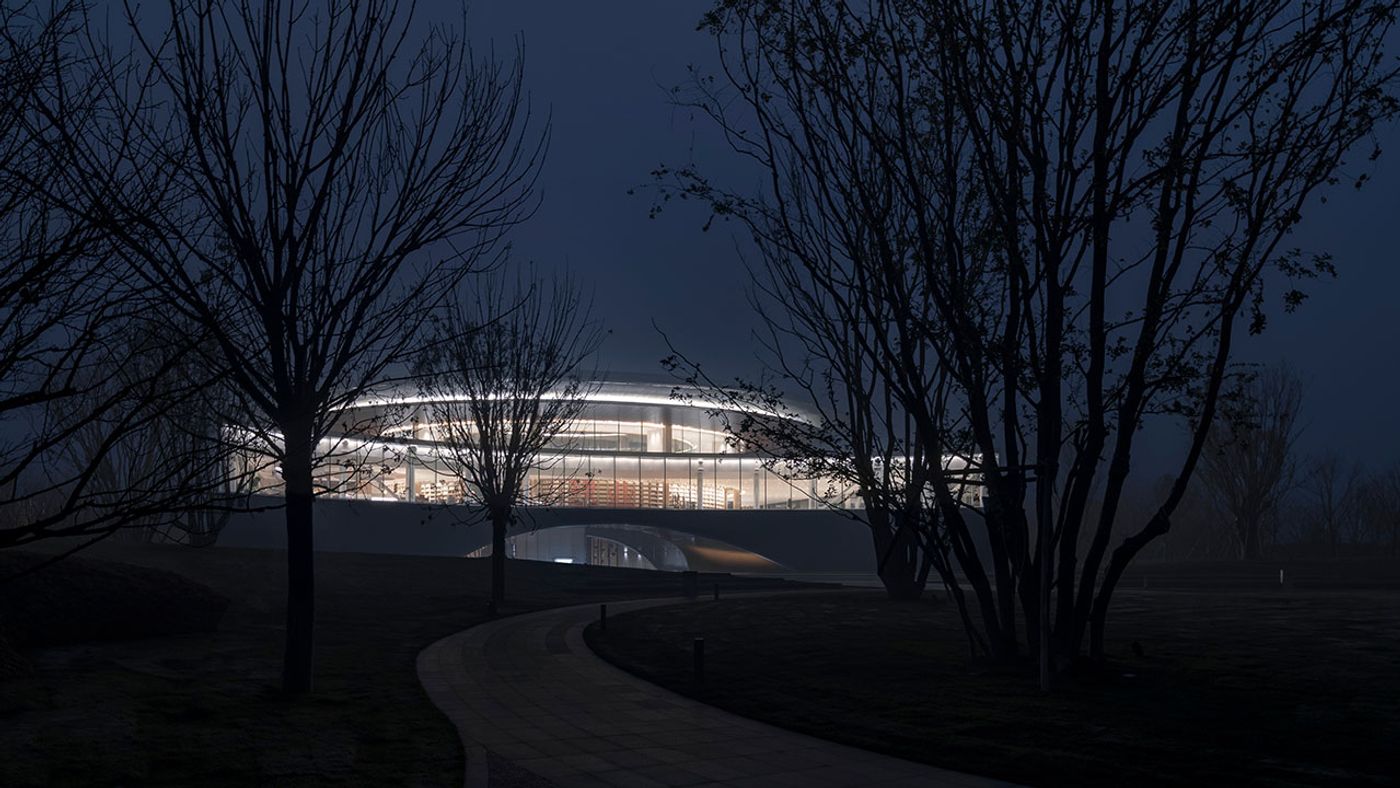
Photography © CAAI